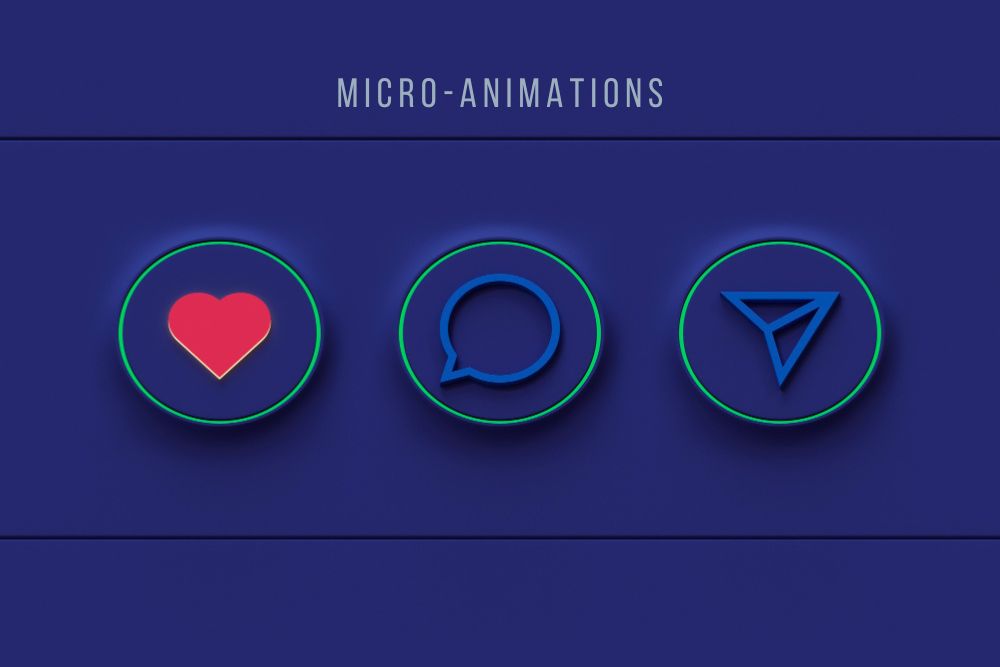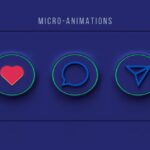As designers and developers, you’re always looking for new ways to attract and hold your audience’s attention. Two powerful tools that have emerged are story-driven design and micro-animations. These elements allow you to creatively convey your brand’s message while enhancing user interaction and satisfaction. This article highlights how incorporating narrative and slight animations into your website design increases the user experience, and also sets your website apart.
Story-Driven Design in Website Creation
Story-driven design is a transformative approach to website creation that puts narrative at the forefront of the user experience. By integrating storytelling elements into your website, you create an immersive experience that conAnects emotionally with users. Unlike traditional designs that focus only on aesthetics and functionality, story-driven design contains motion, meaning, and purpose. This approach involves preparing a coherent narrative that guides users through their journey on your website. Each element of the design, from color schemes to typography, is carefully selected to support the story you want to tell.
For example, a website promoting a fitness brand might incorporate a narrative of personal transformation and empowerment, using images, testimonials, and a robust content strategy to reflect that story. By adopting a story-driven design, you challenge yourself to think creatively about how each aspect of your website contributes to the user’s overall experience. This approach not only enhances user engagement but also builds a deeper connection between your brand and your audience.
Key Elements of Creative Website Design
Creative website design is more than just aesthetics; it involves a strategic blend of various elements that work together to create a smooth user experience. Here are some key components you should consider:
- Visual Hierarchy: This involves arranging design elements in order of importance, guiding users’ attention to where it matters most.
- Typography: The fonts and typefaces you choose set the tone for your content and affect readability and visual appeal.
- Color Scheme: Colors stimulate motions and associations. A well-thought-out color palette can enhance the overall mood and message of your website.
- Responsive Design: Ensuring your website functions intuitively on all devices is critical in today’s mobile-first world.
- Micro-Animations: See below for their role, but generally, they enhance interactivity and feedback.
Integrating these elements into your website in a creative manner improves user experience by making it more enjoyable, intuitive, and reflective of your brand’s identity.
How to Incorporate Storytelling in Web Design
Incorporating storytelling into web design involves incorporating narrative elements into your site’s structure and content. Here’s how you can do it effectively:
- Character Development: Establish a clear brand identity that communicates your values and vision. This identity becomes the ‘protagonist’ in your story.
- User-Centric Plot: Place users at the heart of the narrative. Understand their journeys, challenges, and solve their problems through your website’s content and features.
- Visual Storytelling: Use images, graphics, and videos to convey stories visually. An infographic or an explainer video can briefly present complex information.
- Consistent Messaging: Ensure that your narrative remains consistent throughout all pages and content of your site. Users should feel like they’re experiencing one unified story.
By skillfully incorporating these storytelling elements, you create a dynamic and engaging web design that not only informs but also inspires action.
Micro-Animations
Micro-animations are fine, short animations used in web design to provide feedback, guide users, and enhance navigation. These delicate animations, though small, carry a significant impact on user interaction in website design, micro-animations can serve various purposes, such as:
- Providing Feedback: Animations that indicate button presses or form submissions enhance positivity in user interactions.
- Guiding Attention: Slight movements can attract users’ attention to critical areas or calls to action.
- Improving Navigation: Animations can help in smooth transitions and provide a direction when navigating between sections.
- Adding Aesthetic Value: They contribute to the visual appeal, adding life and dynamism to your website.
Integrating micro-animations thoughtfully helps bridge the gap between user actions and system responses, enriching the overall experience on your website.
Impact of Micro-Animations on User Engagement
Micro-animations are integral to user engagement. Their sophistication is their strength, providing smooth and almost unnoticeable feedback that enhances user experience. By employing micro-animations, you give users instant feedback, which reduces uncertainty and helps and real-time understanding of their actions. For example, a gentle shimmer when hovering over a clickable element signals interactivity, subtly guiding users without overt intrusion.
Moreover, these animations can increase conversion rates. When users feel engaged and at ease navigating a site, they are more likely to respond to calls to action, whether it’s signing up for a newsletter or purchasing a product. This results in a higher probability of users becoming loyal customers. Micro-animations may be small in scope, their capacity to significantly boost user engagement makes them a powerful tool in your creative website design arsenal.
Best Practices for Enhancing User Experience through Design
To truly enhance user experience through your website design, you must follow best practices that put user needs and preferences at the forefront:
- User-Centered Design: Start with understanding your target audience. Conduct user research to understand their behaviors, needs, and pain points.
- Accessibility: Ensure that your website is usable by all people, regardless of disability. This includes considerations for color contrast, font size, and alt text for images.
- Consistent Design Language: Maintain consistency in your visual and functional elements to provide a cohesive and predictable user experience.
- Simplified Navigation: Prioritize clean and intuitive navigation to make it easy for users to find information and complete actions.
Following these best practices you prioritize user satisfaction and engagement, ensuring your website is both effective and enjoyable to explore.
Future Trends in Story-Driven Design and Micro-Animations
As technology advances, so too will the techniques and methods used in story-driven design and micro-animations. The future holds exciting possibilities:
- Augmented Reality (AR): Integrating AR with storytelling can result in immersive user experiences, allowing users to interact with digital content in real-world settings.
- Personalized Storytelling: As data collection and AI evolve, preparing personalized narratives that adapt dynamically to individual users’ preferences becomes possible.
- 3D Animations: The use of 3D elements can offer a more engaging and lifelike interactive experience, especially in product demonstrations or complex information visualization.
- Increased Use of Micro-Interactions: As micro-animations become more sophisticated, the scope of micro-interactions will expand to provide richer user feedback and engagement.
These trends indicate a future where design is even more intuitive, interactive, and personalized, continuing to enhance user experiences in remarkable ways.
Integrating story-driven design and micro-animations into your website is more than just a design choice; it’s a strategic method to elevate user experience. By incorporating narrative, you make your site engaging and memorable. Micro-animations provide key feedback and enhance navigability, making the interaction reflexive and satisfying. As you look to the future, utilizing the dynamic evolution of technology and user preferences will keep you at the advancements of web design. By implementing these strategies effectively, your website will not only meet your audience’s needs but also exceed their expectations, driving engagement and facilitating loyalty.




